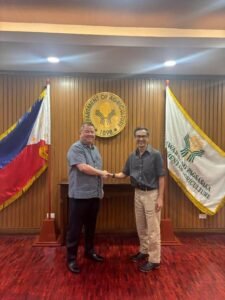
Top officials of the Departments of Agriculture and Transportation have vowed to fast-track the development of a food hub on land owned by the Clark International Airport Corp. (CIAC) to centralize the storage, processing, and distribution of agricultural commodities, while providing efficient access to farmers.
A recent site inspection by Secretary Francisco P. Tiu Laurel Jr. and Department of Transportation Secretary Vince Dizon with CIAC officials confirmed that about 47 hectares have been earmarked for the hub, adding that developing the 12-hectare site will cost around P2 billion.
“Access to the entire area remains challenging,” he noted. “But a 12-hectare section could be sufficient for initial development, considering our current budget and timelines.”
He added that while the proposed area is smaller than Thailand’s successful 50-hectare agricultural distribution center, it is important to lay the foundation for future administrations to expand on.
The food hub could be operational within 18 months from the start of construction.
Sec. Dizon, who also chairs CIAC, described the hub as a potential “game-changer” for Philippine agriculture and food logistics, citing Clark’s strategic location—close to both the Subic Seaport and the Subic-Clark Expressway, as well as its proximity to the Clark International Airport (CRK).
Dizon also revealed that the food hub concept was originally proposed by Semmaris of France, operator of the busy Rungis International Market near Paris.
However, the initial plan stalled when Semmaris’s local partner withdrew due to high relocation costs associated with the original site, which could have ultimately burdened consumers.
With renewed government backing, both Sec. Tiu Laurel and Sec. Dizon hope the project can finally move from blueprint to reality—marking a major step toward modernizing the country’s food value chain.
Besides Clark, the DA is also looking at other sites across the country to set up similar food hubs to bolster farm output, stabilize food supply and prices, increase farmers income, and generate jobs and investments.



